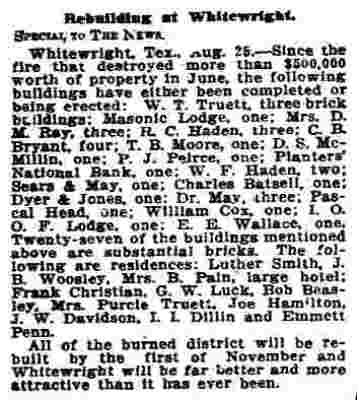Dallas Morning News
June 12, 1911
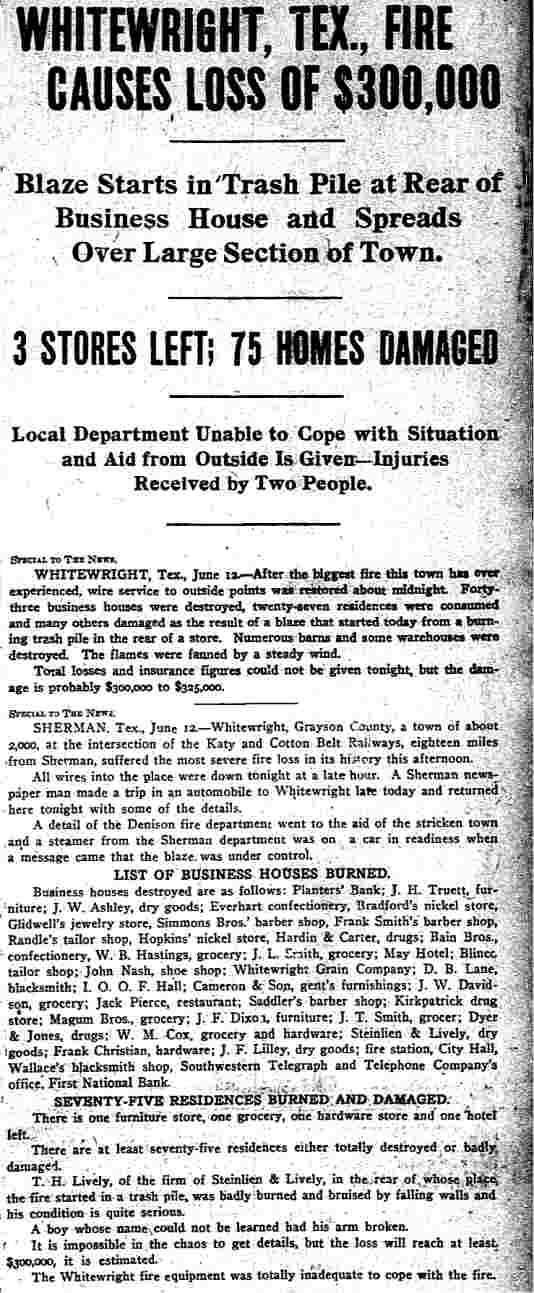

|
Dallas Morning News
June 13,1911 pg 1 Woman Describes Fire Mrs. George Pfaeffle of Greenville Tells of Great Confusion Among the People of Whitewright Special to the News. Greenville, Tex., June 12 - Mrs. George Pfaeffle of this city returned home today from Shawnee, OK., and passed through Whitewright this afternoon while the fire there was at its height. She says the utmost confusion existed and the greater part of the town seemed to have been destroyed. Household and store goods were piled in the streets in heaps and the people were running about in the greatest of excitement trying to save their property while flames fanned by a wind from the north, leaped as far as a block at a time and ignited dozens of structures that soon burned. The town was enveloped in a cloud of heavy smoke, embers were flying and vehicles and people rushed about with what goods they could take to a place of safety. Mrs. Pfaeffle says she saw only two stores that had not been destroyed and at the time the train left many residences were in ashes, others were burning and a long string of box cars near the railroad station were about to become ignited." Chicago Man Tells of Fire At Three o'clock Monday Afternoon Twelve or Fifteen Buildings Were Aflame and Others Gone Robert J. Goldsmith of Chicago passed through Whitewright Monday afternoon at 3 o'clock. Mr. Goldsmith said that at the time it appeared to him that twelve or fifteen buildings were burning and that one entire block was already destroyed. He said that people who got on the train at Whitewright state that the fire started about 10 o'clock in the morning and burned slowly, but that as there was no water, nothing could be done to stop its progress. Mr. Goldsmith stated while in Dallas that from the train it appeared that the entire business section west of the railway tracks were either burned or burning at Whitewright. |

 |  | 
 |
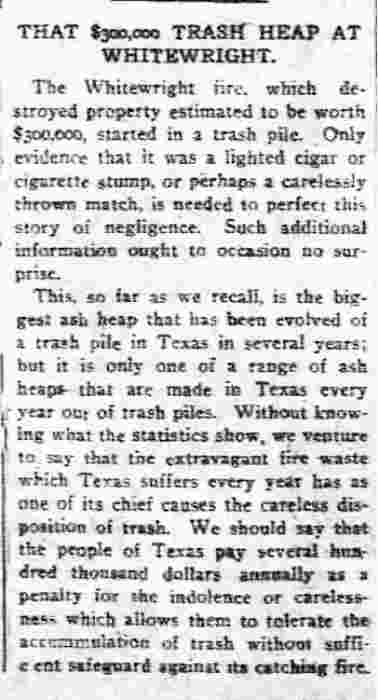
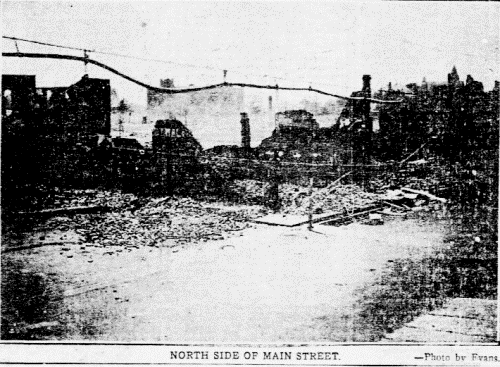
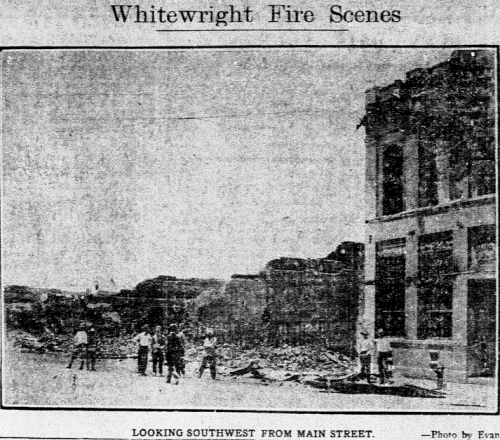
| Wichita Weekly Times
June 16, 1911 WHITEWRIGHT LOSS NEARLY $500,000
Rebuilding plans were afoot even before the details of yesterday's losses were completed. Forty-seven business firms occupying forty-three buildings lost their entire stocks and the buildings are also a total loss. Roughly the loss is estimated at half a million dollars. Those injured during the fire are: J.H. Lively, who was painfully but not fatally burned, and a youth named Shears (Sic- Sears), whose arm was broken. Every house remaining after the fire was thrown open to shelter the homeless and a public meeting was held to plan their care. The fire originated in the rear of Steintien & Lively's dry goods store. The town has only a volunteer fire department, which was handicapped by the low water pressure, the supply having been diminished by the inroads made by farmers who needed water for livestock. In a short time the fire was beyond all control and so fiercely did the conflagration rage that the merchants were not given an opportunity to remove the imperiled stocks of goods. An appeal was sent to the Sherman and Denison fire departments and the latter responded with a chemical engine and 1,000 feet of hose. This assistance reached Whitewright at 5:30 o'clock and materially aided in finally checking the fire. The Sherman department sent a chemical engine, with hose, which failed to arrive until the conflagration was checked. Among the buildings destroyed were the city hall and fire station, Odd Fellows' hall, Masonic hall and the Southwestern telephone exchange. The entire business district was swept, the fire, burning every building on Main street between the site of the Stientien & Lively dry goods store and the First National bank building, the latter being saved. |
